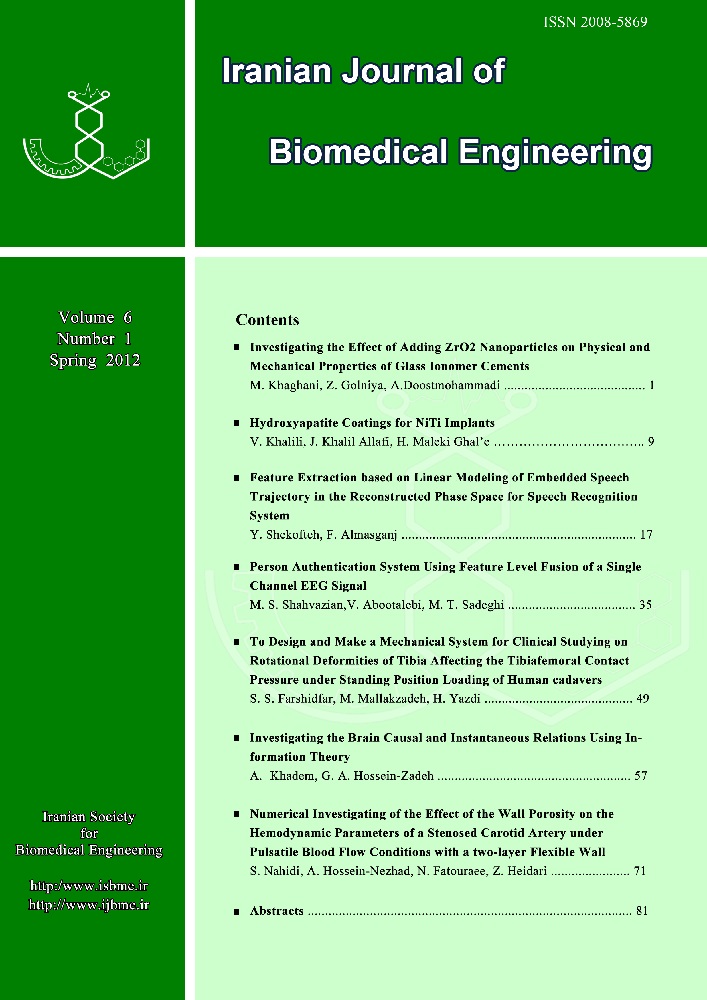Document Type : Full Research Paper
Authors
1 Msc in Materials Engineering, Materials Engineering Department, Najafabad Branch, Islamic Azad University
2 Msc in Materials Engineering, Materials Department, Isfahan University of Technology
3 Assistant Professor, Engineering Faculty, Materials Department, Shahrekord
Abstract
The aim of this work was evaluating of zirconia nanoparticles’ effect on physical and mechanical properties of dental glass ionomer cements (GICs). Ceramic part of GIC was prepared using melting method and zirconia nanoparticles were added to GIC in 1, 3 and 5 weight percent. Characterization tests and compressive strength evaluation of nanocomposite samples were carried out. The XRD results showed that the prepared ceramic part of GIC was completely amorphous and can be used as the matrix of composite. The result of XRF showed that the chemical composition of ceramic part of GIC was similar to expected composition. Also the results of mechanical properties determination analysis showed that the addition of zirconia nanoparticles to GIC could improve the compressive strength. The maximum of this strength obtained using 1% wt of GIC in zirconia composite. Increasing the nanoparticles content resulted in decrease of compressive strength but the strength of composite with any composition was more than the strength of control sample. According to the results of this study, the most proper composite was the one containing1%wt zirconia nanoparticles.
Keywords
Main Subjects

